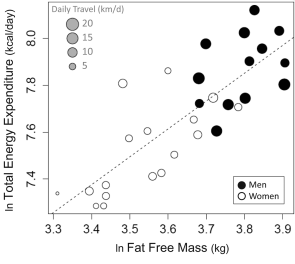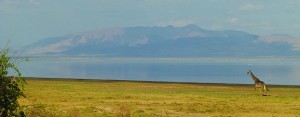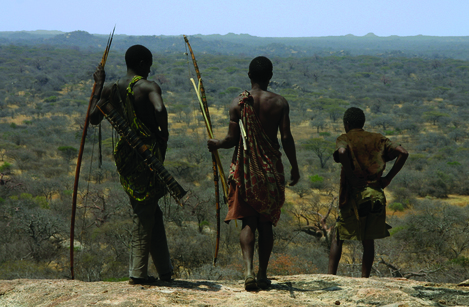The World Health Organization attributes obesity in developed countries to decreases in exercise and energy expenditure relative to our hunter-gatherer ancestors. Where they led active lifestyles, ours are mostly sedentary. In recent research, Yale professor Brian Wood examined total energy expenditure and metabolism in the Hadza population of northern Tanzania — a society of modern hunter-gatherers, if you will.

The Hadza people continue traditional tactics of hunting and gathering. Every day, they walk long distances to forage, collect water and wood, and visit neighboring groups. Individuals remain active well into middle age. Few populations today continue to live an authentic hunter-gatherer lifestyle. The Hadza were thus an optimal group for Wood and his team to research total energy expenditure, or the number of calories the body burns per day adjusted for individuals who lead sedentary, moderate intensity, or strenuous lives. This total energy expenditure it a vital metric used to determine how much energy intake a person needs.
The researchers examined the effects that body mass, fat-free mass, sex, and age have on total energy expenditure. Then they investigated the effects of physical activity and daily workload. Finally, they looked at urinary biomarkers of metabolic stress, which reflects the amount of energy the body needs to maintain normal functioning.
Wood was shocked by the results he saw. Conventional public health wisdom associates total energy expenditure with physical activity, and thus blames lower exercise rates for the western obesity epidemic. But his study found that fat-free mass was the strongest predictor of total energy expenditure. Yes, the Hadza people engage in more physical activity per day than their western counterparts, but when the team controlled for body size, there was no difference in the average daily energy expenditure between the two groups. “Neither sex nor any measure of physical activity or workload was correlated with total energy expenditure in analyses for fat-free mass,” Wood said.
Moreover, despite their similar total energy expenditure, Hadza people showed higher levels of metabolic stress compared to people in western societies today. The overall suggestion that this data seemed to be making was that there is more to the obesity story than a decline in physical exercise. Wood and his colleagues have come up with an alternative explanation.
“Adults with high levels of physical activity may adapt by reducing energy allocation to other physical activity,” Wood said.

It would make sense, then, that total energy expenditure is similar across wildly different lifestyles — people who participate in strenuous activity every day reorganize their energy expenditure so that their total calories burned stays in check.
To account for the higher levels of metabolic stressors in Hadza people, Wood and his research team suggested high rates of heavy sun exposure, tobacco use, exposure to smoke from cooking fires, and vigorous physical activity, all characteristic of the average Hadza adult.
Daily energy requirements and measurements of physical activity in Hadza adults demonstrate incongruence with current accepted models of total energy expenditure: despite their high levels of daily activity, Hadza people show no evidence of a greater total energy expenditure relative to western populations.
Wood said that further work is needed in order to determine if this phenomenon is common, particularly among other traditional hunter-gatherers.
“Individuals may adapt to increased workloads to keep energy requirements in check,” he said, adding that these adaptations would have consequences for accepted models of energy expenditure. “Particularly, estimating total energy expenditure should be based more heavily on body size and composition and less heavily on activity level.”
Cover Image: Three Hadza hunter-gatherers, who were the subject of Wood’s study, stand overlooking the plains of Tanzania. Image courtesy of Professor Brian Wood.

